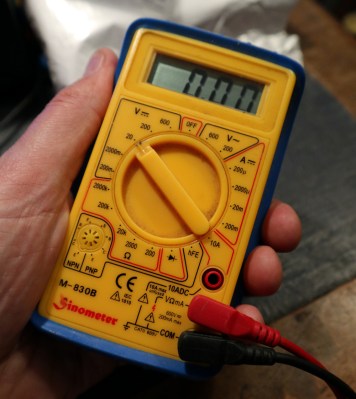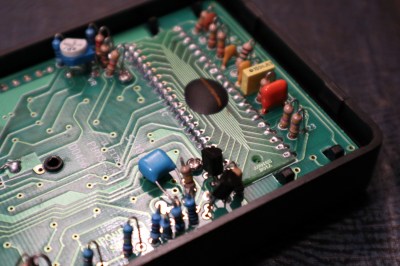In Praise Of The DT830, The Phenomenal Instrument You Probably Don’t Recognise For What It Is
If we had to make a guess at the single piece of electronic bench equipment owned by the highest proportion of Hackaday readers, it would not be a budget oscilloscope from Rigol, nor would it be a popular portable soldering iron like the TS100. Instead we’re guessing that it’s a multimeter, and not even the most accomplished one.
The DT830 is a genericised Chinese-manufactured 3.5 digit digital multimeter that can be had for an astonishingly low price. Less than a decent hamburger gets you an instantly recognisable plastic case with a chunky rotary range selector switch, and maybe a socket for some kind of transistor or component tester. Make sure that there is a 9 volt battery installed, plug in the pair of test leads, and you’re in business for almost any day-to-day electrical or electronic measurement. They’ve been available in one form or another for decades and have been the subject of innumerable give-aways and loss-leader offers, so it’s a reasonsble guess that you’ll have one somewhere. I have three as far as I know, they make great on-the-go instruments and have proved themselves surprisingly reliable for what they are.
Persuading You Is Going To Be A Tough Sell

If you talk about the DT830 in polite company, you might be greeted with snorts of derision. It’s not difficult to find reviews that tear one down and compare it to a more expensive meter, and not surprisingly find the pricey meter to be of higher quality.
And it’s certainly true that for a couple of dollars, you get a switch that won’t last forever and high voltage isolation that maybe isn’t quite up to spec. But I’m going to advance a different take on the DT830 that may surprise some of you: to me it’s a modern classic, an instrument that provides performance for its price that is nothing short of phenomenal. Because that pocket-money meter not only measures voltage, current, and resistance, it does so accurately and repeatably, and to compare that with what might have gone before is to show just much better a device it is.
Thirty years ago, a digital multimeter was an expensive item, and most multimeters were still analogue. A cheap multimeter was therefore invariably a small pocket analogue device, and the very cheap ones could be astoundingly awful. Accuracy and repeatability in reading wasn’t their strong point, and while I am a great fan of analogue multimeters when it comes to spotting dips and trends in tweaking analogue circuitry, even I can’t find reason to praise the inexpensive ones. By comparison the DT830 delivers reliable and accurate readings with a high-impedance input, something I would have given a lot for in 1985.
That Performance Is No Fluke

So given that it costs considerably less than a pint of beer in a British pub, how does such a cheap instrument do it? The answer is, by standing on the shoulders of giants. My colleague Anool Mahidharia supplied the answer here back in 2017 when he took a look at the Intersil 71XX series of integrated circuits; the archetypal DT830 contains an ICM 7106 3.5 digit digital panel meter chip, whose roots lie in a much more exclusive stratum of the industry.
(Despite there being a load of newer and more accomplished multimeter chips on the market I was surprised to find that none of them had found their way into the meters I’d opened.)
The ICM 7106 was based on work Intersil did in 1977 to produce the part in Fluke’s first portable DMM, the model 8020A.

So you’re not getting anywhere near the physical design or component quality of that expensive meter, but you are benefiting from the tech that made its ancestor a very good instrument for the 1970s. The dual-slope integrating ADC and precision reference are the same as the ones in many far more expensive meters, which is what makes the reading from your few-dollar DT830 one you can trust. Not bad for something you might dismiss as a piece of junk!
If there is something to be gleaned from this story, it is a very real demonstration of the power of semiconductor manufacturing. Assuming it has passed acceptable factory QA, every 7106 is as good as any other 7016, from the first one made by Intersil in the 1970s through to the unknown-origin chip hiding under an epoxy blob in my cheap meter. The manufacturer can skimp on every other component in the meter, but assuming that there’s no money in counterfeiting a 43-year-old chip that long ago left its premium product phase behind and has been manufactured by many sources over the years, they can’t skimp on the chip that powers it. To be an ICM7106, it must have the same features as the original from the 1970s, thus my bargain-basement meter still shares something that matters with one of far higher quality.
The DT830 multimeter, then. It may be a heap of junk, but it’s an astonishingly good heap of junk. I for one, salute it.
from Hackaday https://ift.tt/3crcagl
Comments
Post a Comment